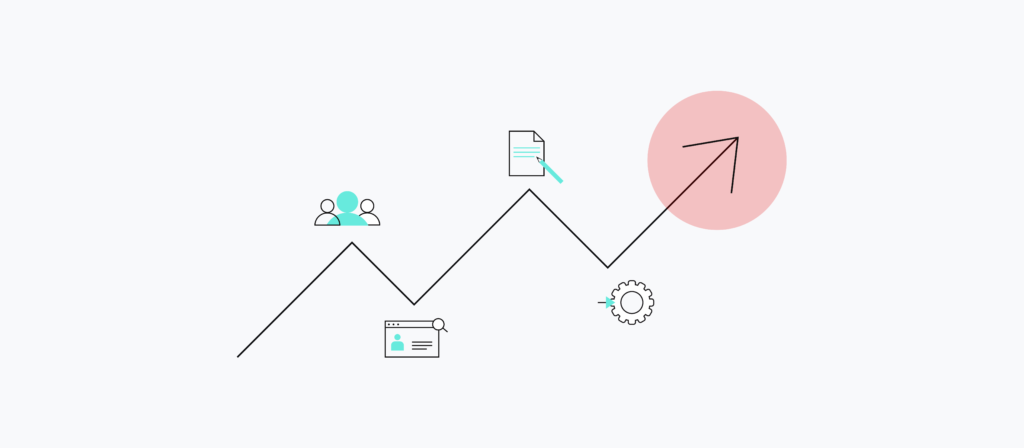Over the past few years, my team has worked tirelessly on ideating and executing countless experiments on just about every step of the user journey.
We’ve tested everything from the number of seconds we should wait before displaying an Intercom chatbot on our homepage to the name that resonates most in an email subject line for our outbound sales efforts (here’s a hint: it’s not your company’s name).
After all this experimentation, I can safely say that my approach to growth is more of a mindset than a process.
How, you ask?
I was lucky enough to share my thoughts alongside Kyle Coleman, VP of Revenue Growth & Enablement at Clari, during our recent webinar, “Confessions of a RevOps Leader.”
Here’s a closer look at what I shared.
A multipronged view on growth
Growth, first and foremost, is a philosophy.
It’s about fully embracing a growth mindset and being comfortable with not hitting the nail on the head the first time around. The team that tries 27 different ad images paired with 12 different versions of ad copy will always do better than the team that simply ran a couple A/B tests. Your gut instinct will give a hypothesis of where to start, but rapid experimentation is what’s going to lead you to the best answer.
This runs counter to what we’ve been trained to do in academia: Find the right answer as quickly as you can. But that’s because in the real world, we don’t have perfect information. There are countless unpredictable forces that can influence the success of an idea, and the only way to know whether one actually works is by testing it.
I want my team to feel comfortable with failure so that they can take risks right from the start. I want them to throw hail marys at the beginning of the game so we can get to the biggest impact as quickly as possible.
The second part of growth comes down to funnels & backlogs.
A common mistake is thinking that pouring more into the top of the funnel is the only way to increase the final output. It’s often much more effective to optimize steps in a funnel vs adding more at the top.
Here at Workato, we’ve taken this to heart by implementing the following process:
- Creating funnels for just about any program, campaign, experiment, and role and tracking them early and often
- Setting benchmarks
- Establishing a backlog of tests that allow us to improve said benchmarks
- Running tests in weekly or bi-weekly sprints
- Rinse and repeat
Growth metrics that every team accepts and can put into context
We generally measure our performance by using 2 metrics: opportunity pipeline and ARR by channel.
1. Opportunity pipeline
To accurately assess our pipeline’s strength, we have demand gen and sales align on the criteria that makes for a qualified lead—which involves using objective markers, like company size, vertical, title, etc.
In practice, this means a sales rep would meet the lead and confirm that they meet our objective standards before moving them to a specific opportunity stage in our CRM.
The rest of our measurement process is pretty simple: Take all of our qualified opportunities and multiply them by the average sale price to get our pipeline value.
Related: How to improve your speed to lead
2. Annual recurring revenue (ARR) by channel
Each of our channels operate differently, whether it’s the types of leads they attract or the speed at which their leads become clients.
For example, leads that come through our Intercom chatbot end up closing in half the time as those that come from organic demo requests. But leads from the chatbot are often smaller companies—which likely means that their average deal size will also be smaller.
Given that each channel is unique, we want to treat them differently as we look to benchmark, test, and, ultimately, maximize their ARRs.
Collaboration across teams
We rely on a lot of functions to help brainstorm and execute our growth initiatives—from our in-house writers and designers to our product managers and developers.
For example, we partner with our product team to track product usage data among our clients. Once we see that a certain department at an account has done a great job of automating their workflows, we encourage these users to reach out to colleagues in other functions to see if they can also benefit from automation.
The result is a win-win: Our clients transform more of their processes with automation, and we earn additional sales opportunities from these accounts.
If you’d like to learn more about my team’s approach to growth and discover how Kyle and his team operate at Clari, you can watch the recording of our webinar.
